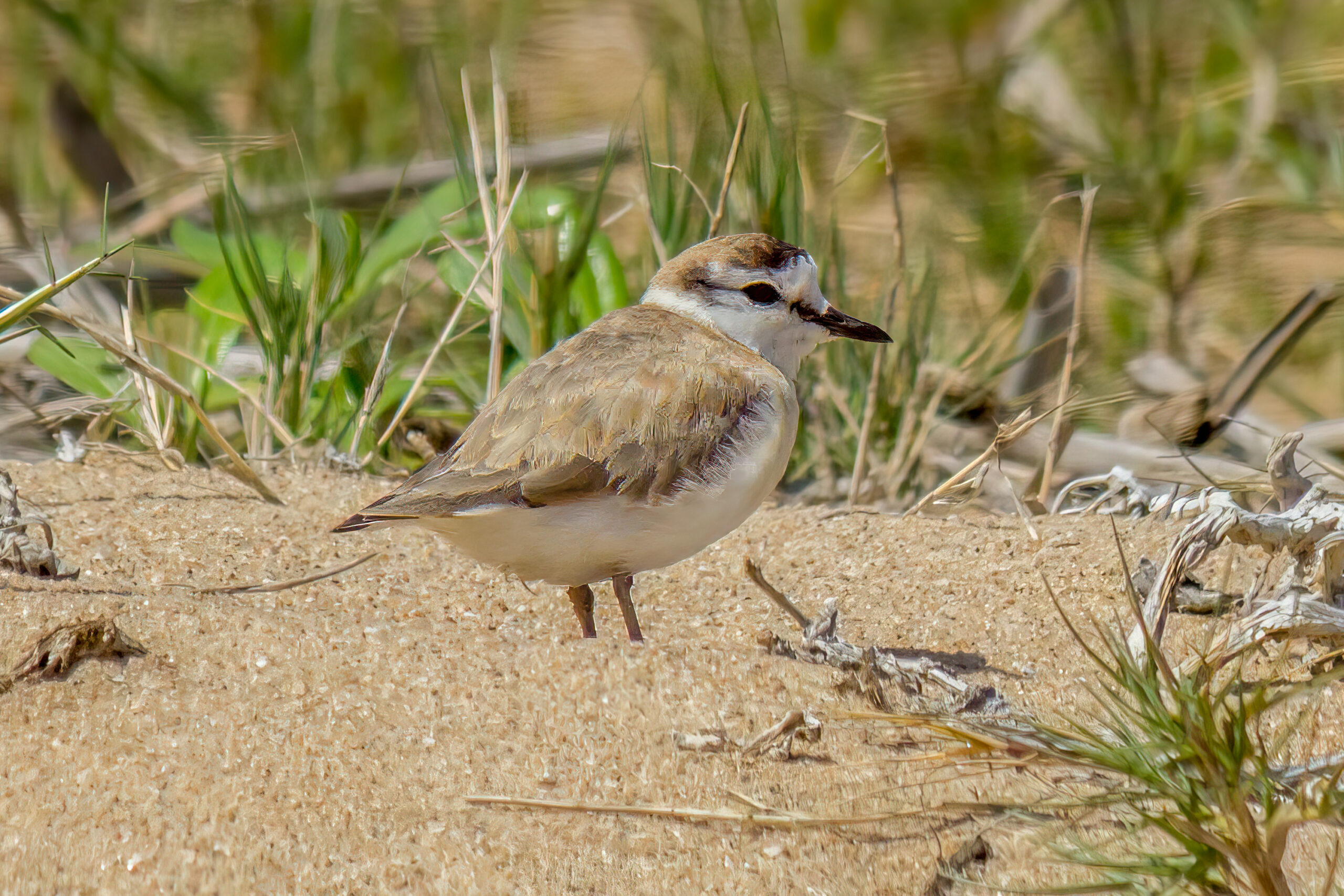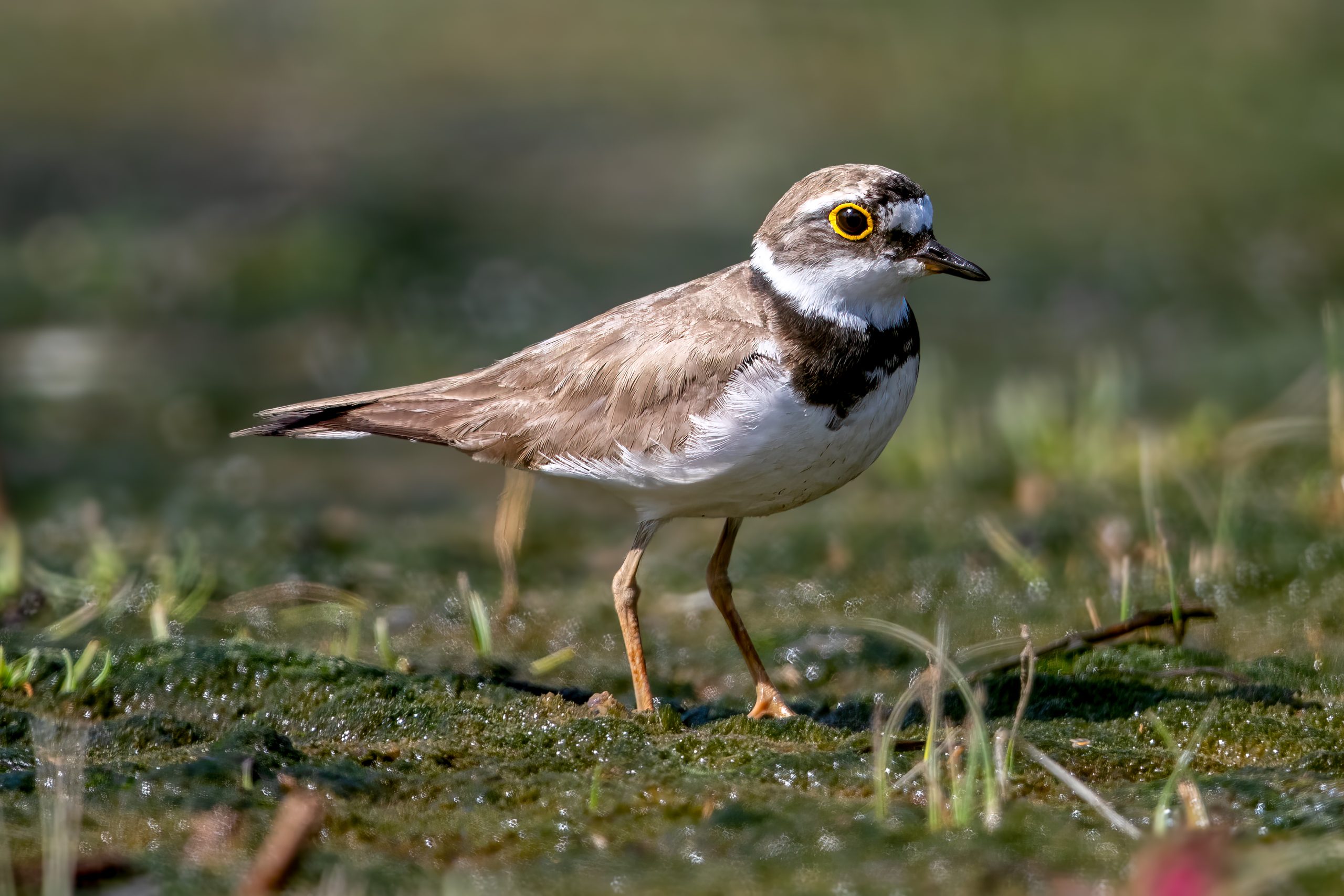Description
The common ringed plover (Charadrius hiaticula) is a small, robust shorebird with a wide breeding range, found across the Arctic and sub-Arctic regions of Europe and Asia, extending southwards to temperate zones. During winter, it migrates to coastal areas in Africa, the Middle East, and South Asia. It is known for its distinctive black and white facial markings. Adults typically measure about 18-20 cm (7.1-7.9 in) in length with a wingspan of 35-41 cm (14-16 in) and weigh around 55-75 grams (1.9-2.6 oz). The species is easily recognized by its black chest band, white underparts, brownish-grey upperparts, and an orange bill with a black tip. Juveniles have a more subdued coloration with a brownish chest band. The common ringed plover is very similar to the semipalmated plover (Charadrius semipalmatus). However, the semipalmated plover has a slightly smaller size, and typically only occurs in the Americas.
Diet & habitat
Common ringed plovers inhabit a variety of open, sandy or gravelly environments near water bodies, such as beaches, mudflats, and riverbanks. They are highly adaptive and can also be found in artificial habitats like gravel pits and coastal saltmarshes. Their diet mainly consists of small invertebrates, including insects, crustaceans, and worms. They forage using a technique known as “run-and-peck,” where they run a short distance, pause to peck at prey on the ground, and repeat. This method allows them to cover large areas quickly while searching for food.
Migration
Common ringed plovers are migratory birds with a notable seasonal movement. They breed in the northern parts of Europe and Asia during the summer and migrate southward to warmer coastal regions for the winter. The migration typically occurs from late July to September, and they return to their breeding grounds from March to May. During migration, these plovers travel along well-established flyways, often stopping at key staging areas to rest and refuel. Their migratory behavior is characterized by long, non-stop flights, sometimes covering thousands of kilometers.
Nesting
The breeding season for common ringed plovers begins in late April and extends through July. They prefer open, sparsely vegetated areas close to water for nesting. The nest is a simple scrape on the ground, often lined with small stones or shells. Females lay a clutch of 3-4 eggs, which are well-camouflaged against the surrounding substrate. Both parents take turns incubating the eggs for about 23-25 days. After hatching, the chicks are precocial, meaning they are relatively mature and mobile. They leave the nest shortly after hatching and are capable of feeding themselves, although they remain under parental supervision until they fledge, which occurs approximately 24-26 days post-hatching.
Status
The common ringed plover is currently listed as least concern on the IUCN Red List. While its populations are stable overall, local threats include habitat loss due to coastal development, human disturbance, and climate change impacting breeding and wintering habitats. Conservation efforts are focused on protecting critical habitats and minimizing disturbances during the breeding season.












